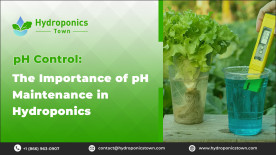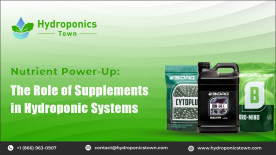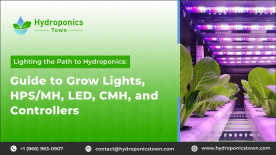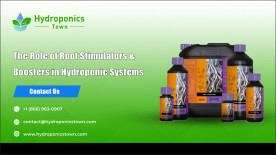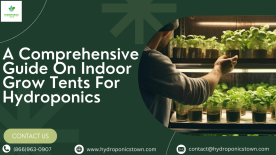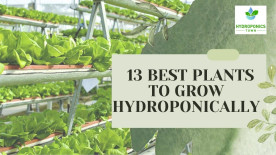pH control plays a pivotal role in the success of hydroponic cultivation. The pH level of the nutrient solution profoundly impacts the availability of essential nutrients to plants, directly influencing their growth, development, and overall health. Understanding and maintaining the optimal pH adjuster levels in hydroponic systems is crucial for unlocking the full potential of this innovative cultivation method. We'll look at the intricate relationship between pH and plant nutrition in hydroponics, delve into the impact of pH fluctuations on plant health, and uncover strategies for effectively managing pH levels to cultivate thriving and bountiful hydroponic crops.
Blog
In hydroponic grow setup, the importance of supplements cannot be overstated. These vital additives are the backbone of plant nutrition in hydroponic systems, ensuring optimal growth and robust yields. Supplements play a crucial role in hydroponic cultivation by providing essential nutrients to plants lacking in the water solution. General hydroponic supplements are specifically formulated to meet the unique nutrient requirements of plants grown hydroponically, ensuring optimal growth, development, and overall health. Let's delve deeper into the significance of these supplements in enhancing plant performance and maximizing yields in hydroponic systems.
Preserving food has been an essential practice throughout human history, enabling societies to store and consume perishable goods beyond their natural shelf life. The significance of food preservation extends beyond mere sustenance, impacting food security, economic stability, and culinary diversity. By employing various preservation methods, communities have safeguarded essential organic nutrients, reduced food waste, and expanded culinary possibilities.
Humidity packs, also known as humidity control packs or moisture-regulating packets, play a vital role in preserving harvested goods by maintaining optimal moisture levels within storage containers. These packs leverage advanced
Hydroponic gardening opens up a world of possibilities for cultivating plants in controlled environments, free from the constraints of traditional soil-based methods. Central to the success of any hydroponic setup is the right lighting system. In this guide, we illuminate the path to hydroponics system by delving into the realm of grow lights, exploring the options available, including High-Pressure Sodium/Metal Halide (HPS/MH), Light Emitting Diode (LED), Ceramic Metal Halide (CMH), and the role of controllers in optimizing plant growth.
Table of contents: Hydroponic farming is a soilless method of growing plants in nutrient-rich water solutions that frequently use inert mediums like perlite, vermiculite, or coconut coir to support the plant roots. This revolutionary approach to agriculture has several economic benefits and has the potential to transform the farming business. One of the key advantages of hydroponic systems is preserving water. Hydroponics uses substantially less water than typical soil-based farming, making it extremely water-efficient.
Table of Contents:
How does hydroponics work?
The initial investment: Analyzing the costs of setting up a hydroponic farmIn hydroponic systems, the health and growth of plant roots are crucial factors that directly impact overall plant vitality and productivity. Root stimulators & boosters play a pivotal role in optimizing root health, leading to enhanced nutrient uptake, stronger plants, and increased yields. Root stimulators and boosters contain essential nutrients, hormones, and growth stimulants that promote root development. These products can improve the root structure by increasing the number and length of root hairs, thereby enhancing the plant's ability to absorb nutrients efficiently.
A well-developed root system ensures that plants can access water and nutrients
An indoor hydroponicgrow tent kit for hydroponic gardening is a specially designed tent that creates a self-controlled environment suitable for plants growing in a hydroponically customized environment. It is designed as a compact and efficient solution for indoor hydroponic gardens to mimic outdoor environmental conditions. It serves the purpose of safeguarding indoors from being affected by external humid and temperature-related issues, making it an ideal place to grow gardens in enclosed and self-controlled premises. It is also designed to provide healthy ventilation for growers and the plants as well. The indoor farming grow tent in hydroponics is a versatile and efficient solution for cultivating plants indoors, providing growers with the ability to control key environmental factors and optimize plant growth.
Imagine a garden that defies gravity, where plants thrive without the constraints of soil and the limitations of traditional gardening. A hydroponic garden system is a game-changing technique that unleashes the power of water and nutrients to create bountiful harvests in even the tiniest of spaces.
Whether you're a green-thumbed enthusiast or a curious beginner, this step-by-step guide will take you on an exciting journey, unveiling the secrets of building your own hydroponic garden. From futuristic systems to mastering the delicate dance of light and pH levels, get ready to embark on an adventure that will redefine your understanding of what it means to cultivate plants.
Table Of Contents:
Are you tired of struggling with traditional soil-based gardening methods? Want to grow plants faster, healthier, and more efficiently? Then get ready to dive into the world of hydroponic systems! In this article, we'll take you on an exciting journey through the Hydroponic System, where we'll explore everything you need to know about this revolutionary method of growing plants.
Whether you're a commercial farmer looking to boost your crop yields or a home gardener eager to grow fresh produce year-round, this guide is for you. Get ready to discover the secrets behind hydroponics and unlock a world of endless possibilities!
Table Of Contents:
- Nov 06 2023
13 Best Plants to Grow Hydroponically 2023
Hydroponics refers to the method of soil-less cultivation of plants with the help of nutrient water solution that includes necessary minerals and elements. By using the hydroponic planting you can grow various vegetables, herbs, and some small fruits.
The main advantage of hydroponic plants is you can cultivate the plants throughout the year as they are not dependent on season or climate conditions. This method of cultivation is widely used in commercial farming, especially for growing high-value crops like lettuce, tomatoes, and herbs. It is also popular among home gardeners and indoor growers due to its space-efficient nature and ability to control growing conditions effectively.

